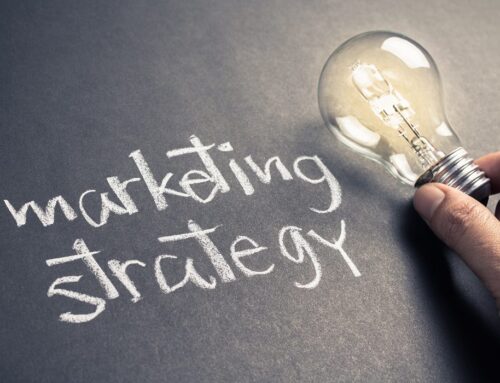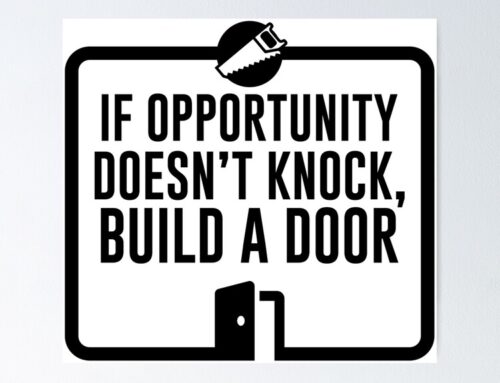Gain and Retain More Customers from Door-to-Door Selling
Some retail energy companies use door-to-door sales reps as a quick, efficient means of signing up new residential customers.
But how many knocks on the door actually result in new customers? And what happens to all those other prospects who either refuse to sign up or don’t answer the door?
According to one industry expert I spoke with, less than two percent of door-to-door sales calls actually convert to a new customer.
This is consistent with results from a study by the Marketing Donut that found that just two percent of sales occur at the first meeting.
There’s no question that a two percent conversion rate can produce a steady stream of new customers when door-to-door selling is used consistently and you knock on enough doors each day.
For example, let’s say you deploy five door-to-door sales reps to knock on 200 doors per day:
5 sales reps x 250 doors x 2% conversion rate = 25 new customers/day
Not bad.
But how about the other 98 percent? Do you forget about them? Or can you provide them an opportunity to connect with you when they are ready?
How to Gain More Customers from Door-to-Door Selling
Here are seven steps to take to get more leads and customers from your residential door-to-door sales activities:
1. Create a Profile of Your Best Residential Customers
Successful marketing begins with understanding which prospects have the best opportunity to become your customers.
It isn’t every homeowner in your marketing territory. Rather, it’s a much smaller group of people who are open to switching energy suppliers and are looking for the kinds of services and solutions that your company provides.
Start by creating a buyer persona for your residential customers.
Buyer persona profiles help align your sales and marketing teams around who they should be focusing on and make it easier to create the right marketing messages.
2. Create the Right Leave-Behind Materials
The right marketing materials are those specifically tailored to your buyer personas and the channel you are reaching them through.
In this case, you’re targeting residential prospects contacted by your door-to-door sales reps but who weren’t ready to make a decision to switch energy suppliers. (See step 7 for ways to incentivize commissioned sales reps.)
Marketing leave-behind materials could include door hangers and brochures. Make sure these materials include one or more calls-to-action.
For example, direct them to a special webpage such as www.yourcompany.com/choice.
3. Create a Webpage For Residential Door-to-Door Prospects
Creating a special webpage for your door-to-door prospects allows you to create messaging specific to the buyer persona you’re trying to reach, and it allows you to track activity attributable to your door-to-door sales and marketing activities.
4. Give Your Residential Prospects What They’re Looking For
When a door-to-door prospect comes to your website (via the special webpage you created for them) they are in one of three stages leading to a buying decision: awareness stage, consideration stage or decision stage. This is called the Buyer’s Journey.
Your door-to-door prospects webpage should include “offers” for each stage. For example:
- Awareness Stage. Prospects in this stage are just looking for more information. They’re not ready to buy. Offer them an eBook or whitepaper that explains more about residential energy choice.
- Consideration Stage. These prospects are aware of energy choice and are looking to determine what options are available that address their particular needs, interests or problems such as fixed vs. variable pricing. Offer them a video, webinar or interactive calculator.
- Decision Stage. These prospects are ready to make a purchasing decision. Offer them the plans your company has available in their area and a way for sales to contact them.
Note: Offers in each stage should be gated, meaning they should be made available to the prospect in exchange for their email address and other personal information.
5. Create a Lead Nurturing Campaign
A prospect becomes a lead when they fill out a form on your website and provide their email address.
Prospects in the awareness stage who have signed up for your eBook or whitepaper are not ready to speak with a sales rep. However, you can enroll them in a lead nurturing campaign designed to move them to the next stages of the buying cycle.
A lead nurturing campaign is a series of personalized, automated emails that provide more information to the prospect, help answer their questions and connect them to offers designed for the consideration and decision stages.
6. Send Qualified Leads to Your Sales Team
Qualified leads are leads that sales and marketing have determined to have taken the right steps and are ready for a sales follow-up.
For example, you could decide that prospects who register for a webinar or leads who download an eBook and look at your pricing webpage are qualified leads.
Automated workflows can be created to identify prospects and leads that meet your criteria and send those leads directly to sales.
7. Monitor and Track Your Leads and Customers
Today’s online marketing software makes it easy for marketers to monitor, track and report on website, email and social media activities.
Campaigns can be created specifically for your door-to-door sales programs so you can track the traffic they drive to your website as well as the leads and customers they produce.
Since door-to-door sales reps and companies get paid for signing up new customers, you may be thinking that they have no incentive to leave behind marketing materials.
By tracking the right marketing metrics and measuring ROI, you can tie an incentive program to your “online” door-to-door sales results.
How to Retain More Customers
If you outsource to an in-person sales and marketing company, you are probably receiving contact information and other useful data for your new customers.
But what else can or should you be doing with that information?
You can stay connected with your new customers and reduce customer turnover by adding your door-to-door sales data to CRM software that integrates with your website’s marketing platform.
This will allow you to build customer retention campaigns that are specifically targeted to customers you have acquired through door-to-door sales.
Conclusion
If you are using door-to-door selling to generate new customers, don’t forget about those residential prospects that don’t immediately sign up.
Give them a way to connect with your brand at their convenience.
Tailor all of your traditional and online marketing content to your buyer personas and where they are in the buyer’s journey.
Map content on your webpages and email campaigns to make it easy for prospects to become a lead and ultimately, a long-lasting customer.
Lastly, monitor and track your “online” door-to-door selling activity.
Article by: Inalign

206-391-5682
i2i@i2idirectmarketing.com
www.i2idirectmarketing.com
“…all deliveries GPS tracked…”





